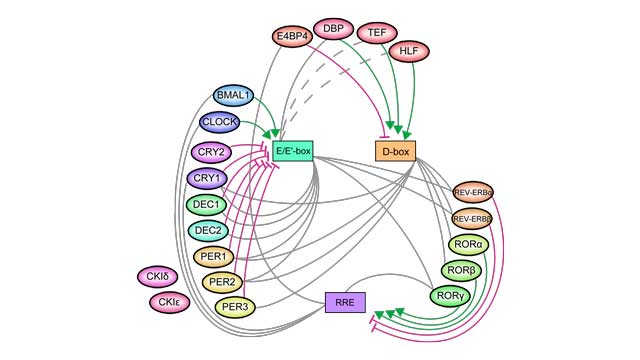Measuring body time
MS-QBiC, the new protein quantitation method, speeds up production of a molecular timetable.
Jun 10, 2016 Tweet

Accurate measurement of the quantity of proteins, such as enzymes or particular factors in a cell, provides clues to the cell’s stage and function. Quantitative proteomics, a method for measuring the trace amounts of protein in the cell with high sensitivity by using mass spectrometry has been developed in recent years.
When proteins are treated with the digestive enzyme, trypsin, a variety of peptide fragments are obtained. In quantitative proteomics, the protein concentration is determined by measuring the concentration of specific peptide fragments, or target peptides, of the protein to be quantified. Stable isotope labeled target peptides are utilized as a reference. To measure multiple proteins at once, however, it is necessary to quickly synthesize a variety of reference peptides, which is normally prohibitively expensive.
In their research, published recently [1], Yoshihiro Shimizu and Ryohei Narumi of the QBiC Cell Design Research Core produced a number of high quality reference peptides at low cost by using the PURE system, an cell free translation system developed by Shimizu, and used them to quantitate multiple proteins. They named the method Mass Spectrometry-based Quantification By isotope-labeled Cell-free products (MS-QBiC).
Conventionally peptides synthesized chemically were costly. Other methods using recombinant DNA technology take more steps including bacterial transfection and culture. “These steps are not necessary with the PURE system” according to Shimizu. “Our new method reduces the cost to one fiftieth of that of chemical synthesis. It also reduces the time to one seventh of that required for recombinant peptide preparation.”
The method was applied to the measurement of the change in circadian clock proteins in the mouse liver and successfully produced quantitative analysis of 16 kinds of biological clock proteins. Among these, 14 types of proteins switched between elevated and decreased levels during the 24-hour circadian cycle. These quantitative times-series results were compiled to build a molecular timetable. By measuring the biological clock proteins at a particular time and then referring to the molecular timetable we can now know the body’s circadian time.
- Narumi, R., Shimizu,Y., Ukai-Tadenuma, M., Ode, K. L., Kanda, G. N., Shinohara, Y., Sato, A., Matsumoto, K., and Ueda, H. R. "Mass spectrometry-based absolute quantification reveals rhythmic variation of mouse circadian clock proteins."Proc. Natl. Acad. Sci. U.S.A.

